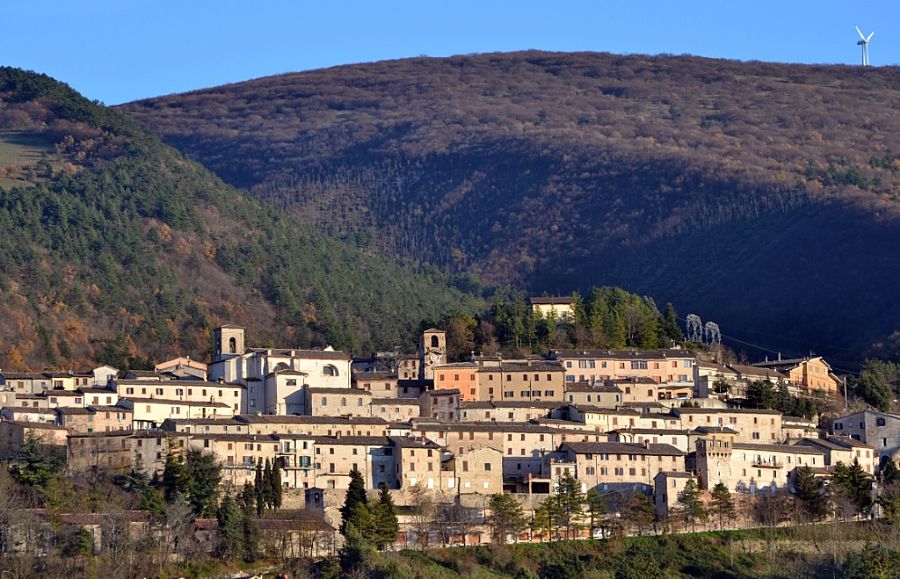Gubbio

Gubbio is a delightful village of the Umbria region, whose charm is reatained in its medieval buildings, churches and streets, that create an old-time, mysterious atmosphere. It's an out-and-out journey into the past!
The town lies at the foot of the Ingino mountain, which offers an unforgettable view of the Apennines, whose ridge acts as a border between Umbria and Tuscany: here interlacing pathways, mule tracks, local roads, that connect the ridge routes with the buttress ones, offer the possibility to take excursions by mountain bike, on foot or by horse.
Gubbio, called Ikuvium in the ancient past, was a city-state built by the Umbri tribe, an Indo-European population who settled in the region of Umbria in protohistoric times (6th century BC). The language was Umbrian, burned into seven bronze tables, the popular "Eugubine Tables", discovered in 1441, which contain inscriptions that supply a key to the original tongues of Italy, prior to Latin.
In Gubbio you will easily enjoy the beauty of marvellous monuments, such as Palazzo Ducale, built as a consequence of the arrival of Federico da Montefeltro in 1470 (a magnificent expression of humanistic culture!) and the Basilica of San Ubaldo, built between 1511 and 1514, in order to welcome the Patron Saint remains.
Any homemade products (made of ceramic, wood, wrought iron, leather and so on...) are undoubted works of art, thanks to the diligence and traditional cleverness of the local craftsmen.
Something very original is the medieval “Race of Candles” (“Corsa dei Ceri”). It started in 1160, the year of St. Ubaldo's death. Since then, every 15th May, the eve of the day of mourning, the devotional offering to the patron Saint is a fixed appointment for the people of Gubbio who are said to take part in a great mystical procession, carrying candles all around the town and up Mount Ingino (where, since 11th September 1194, the body of Saint Ubaldo lies, in the church which bears his name). The candles are three wooden structures (surmounted by the statues representing the saints who protect the corporations: St. Ubaldo for the builders, St. George for the merchants and St. Anthony for the farmers) made by two prisms, placed one on top of the other, and supported internally by a wooden frame which has a bar going through it from top to bottom.
Have a look at our apartment rentals in Gubbio.

 Amalfi Coast
Amalfi Coast Sorrento Coast
Sorrento Coast Tuscany
Tuscany Cilento National Park
Cilento National Park Lake Como
Lake Como Rome and Latium
Rome and Latium Umbria
Umbria Capri and Ischia
Capri and Ischia Venice
Venice Puglia (Apulia)
Puglia (Apulia) Liguria
Liguria Sicily
Sicily Lake Maggiore
Lake Maggiore Lombardy
Lombardy Sardinia
Sardinia Lake Garda
Lake Garda Abruzzo and Marche
Abruzzo and Marche Calabria
Calabria


Been there? Done that? Share your experience and tips!
Haven't visited yet? Have questions about Gubbio? Ask them here!